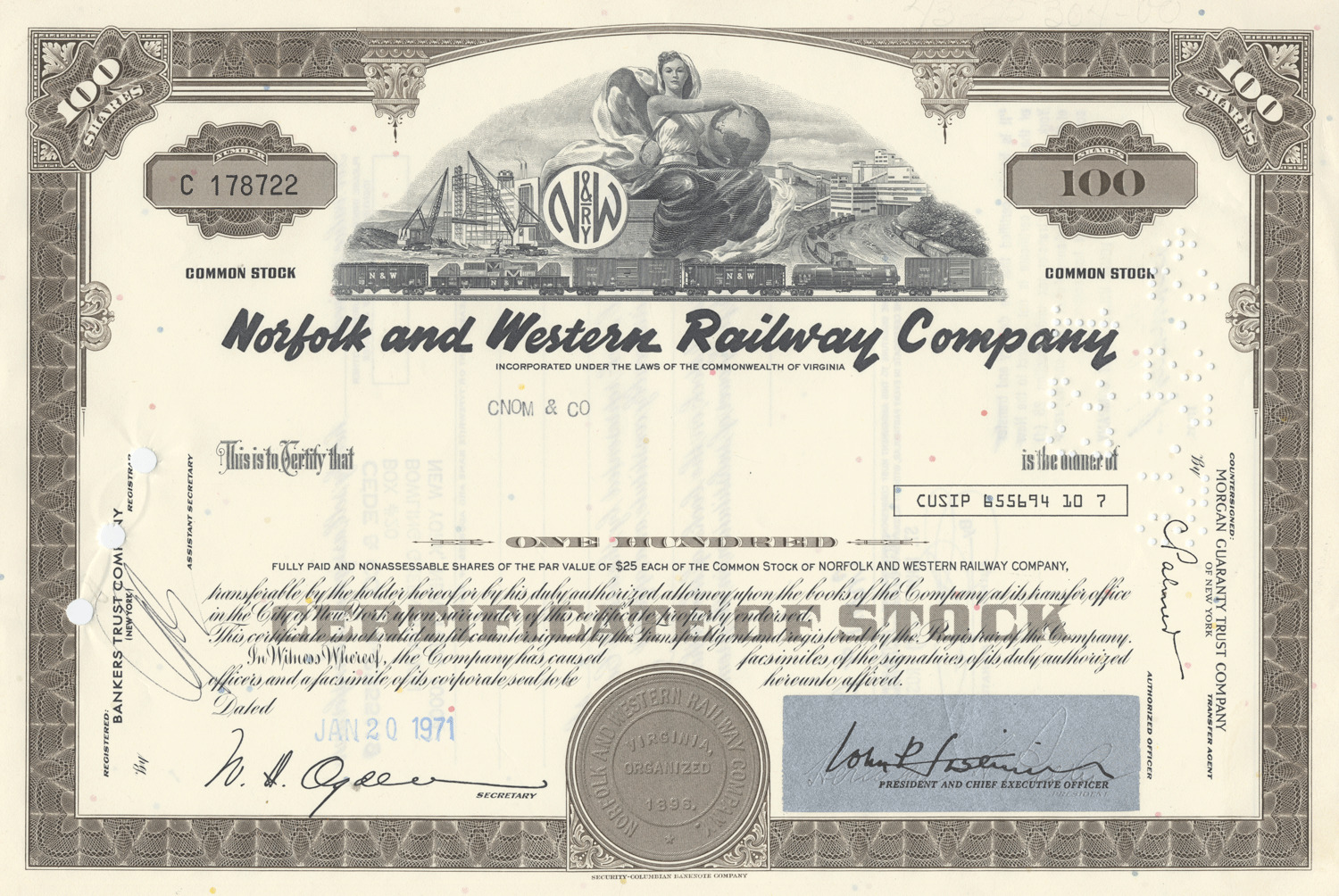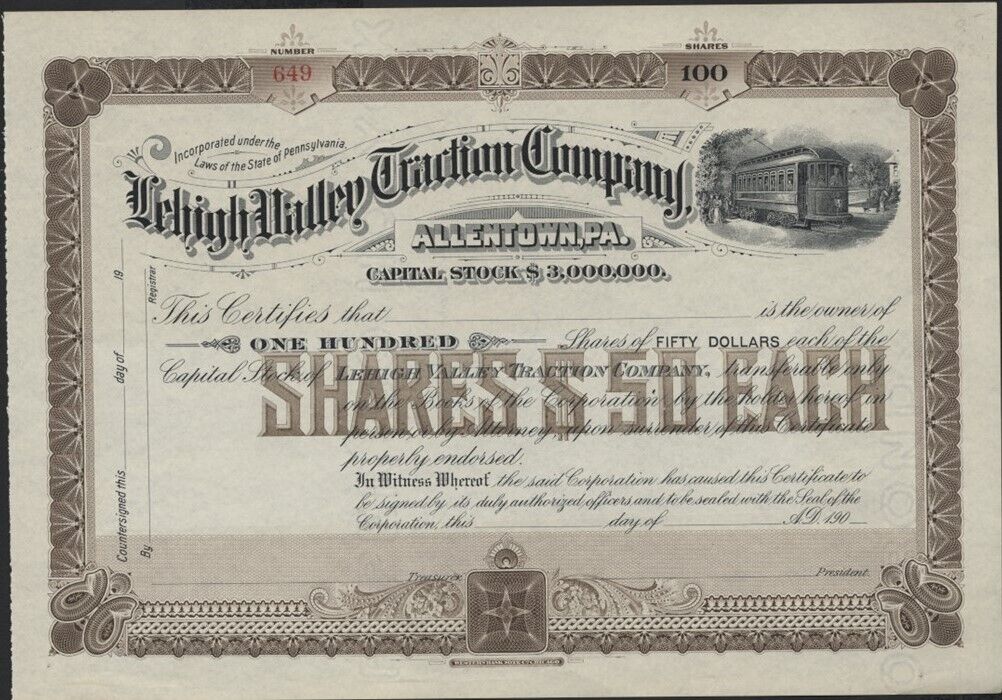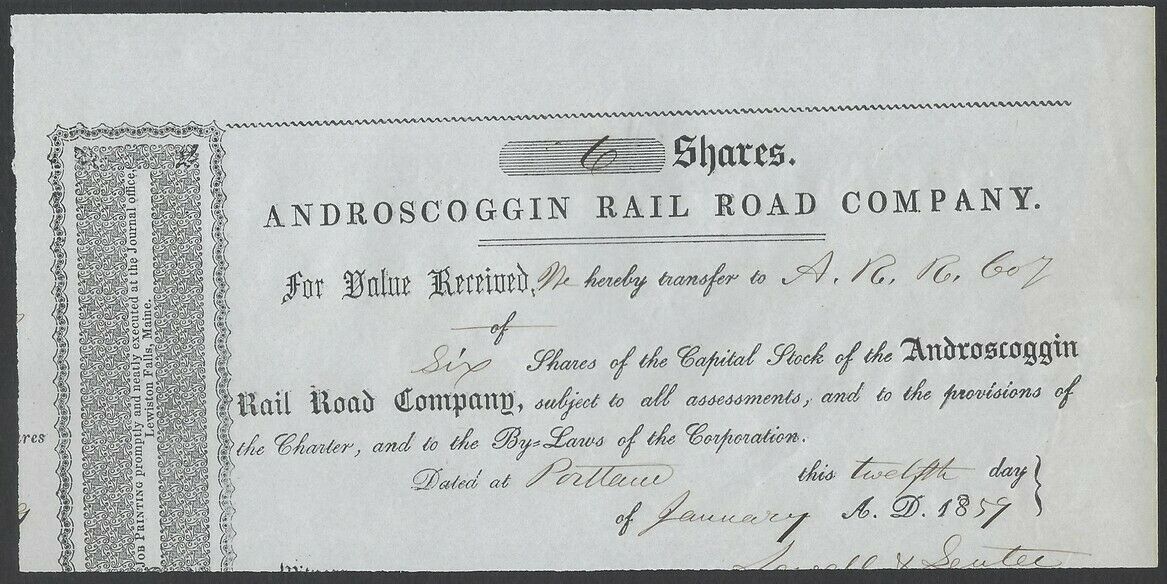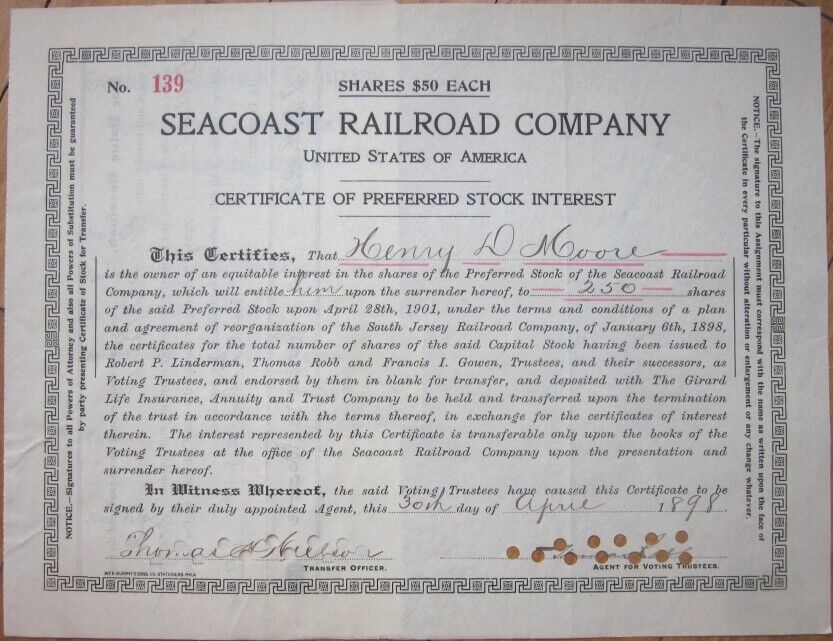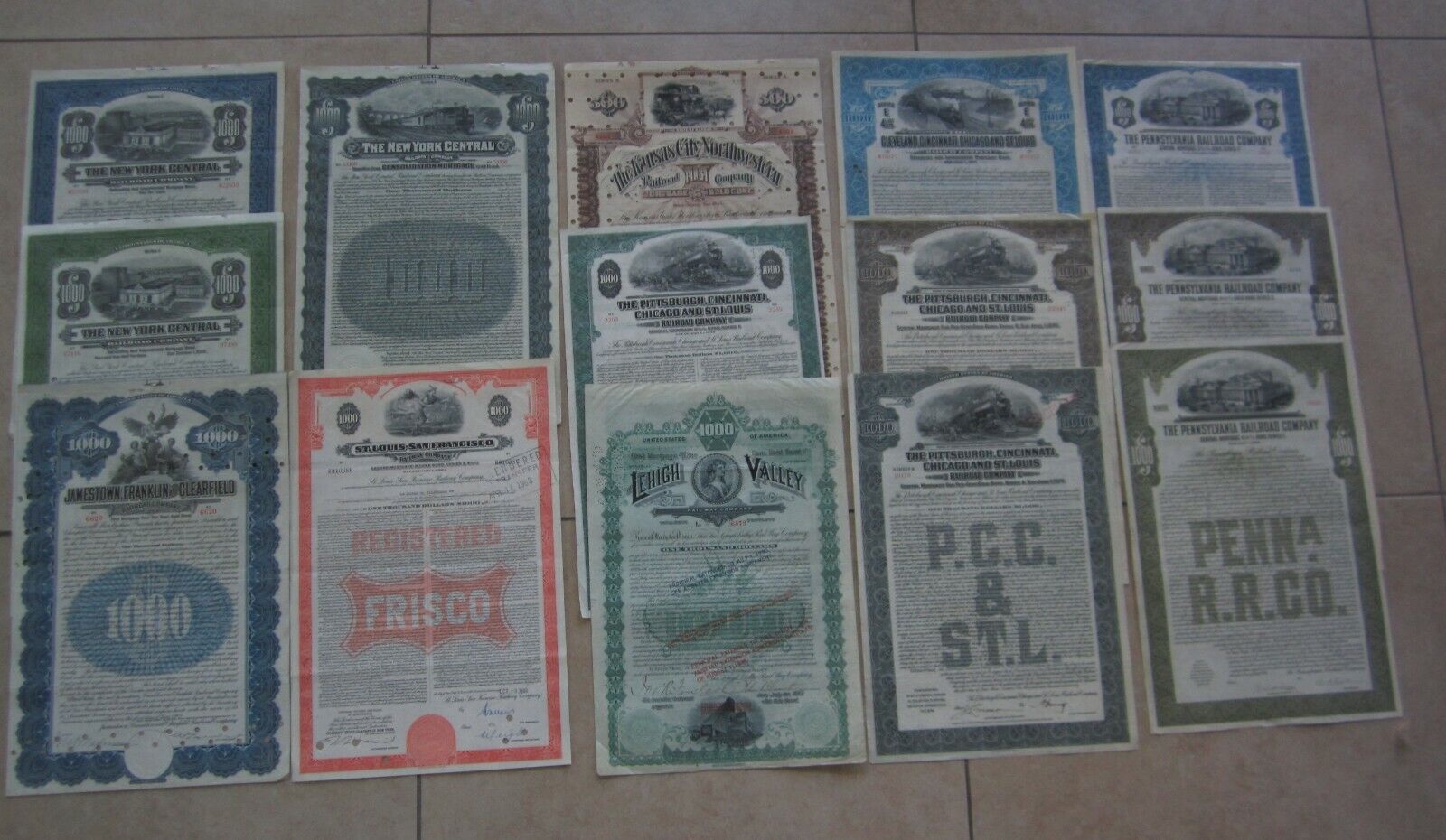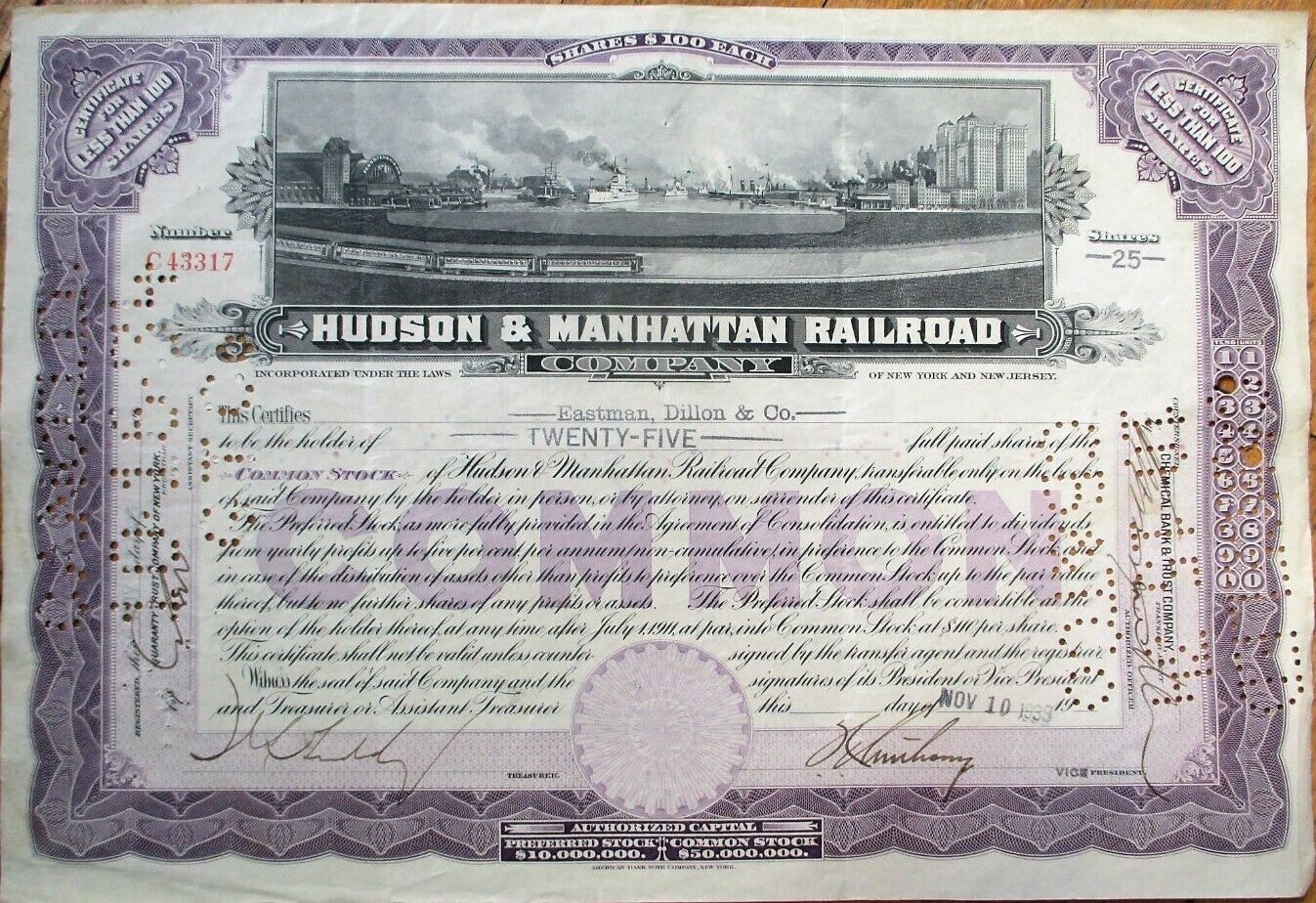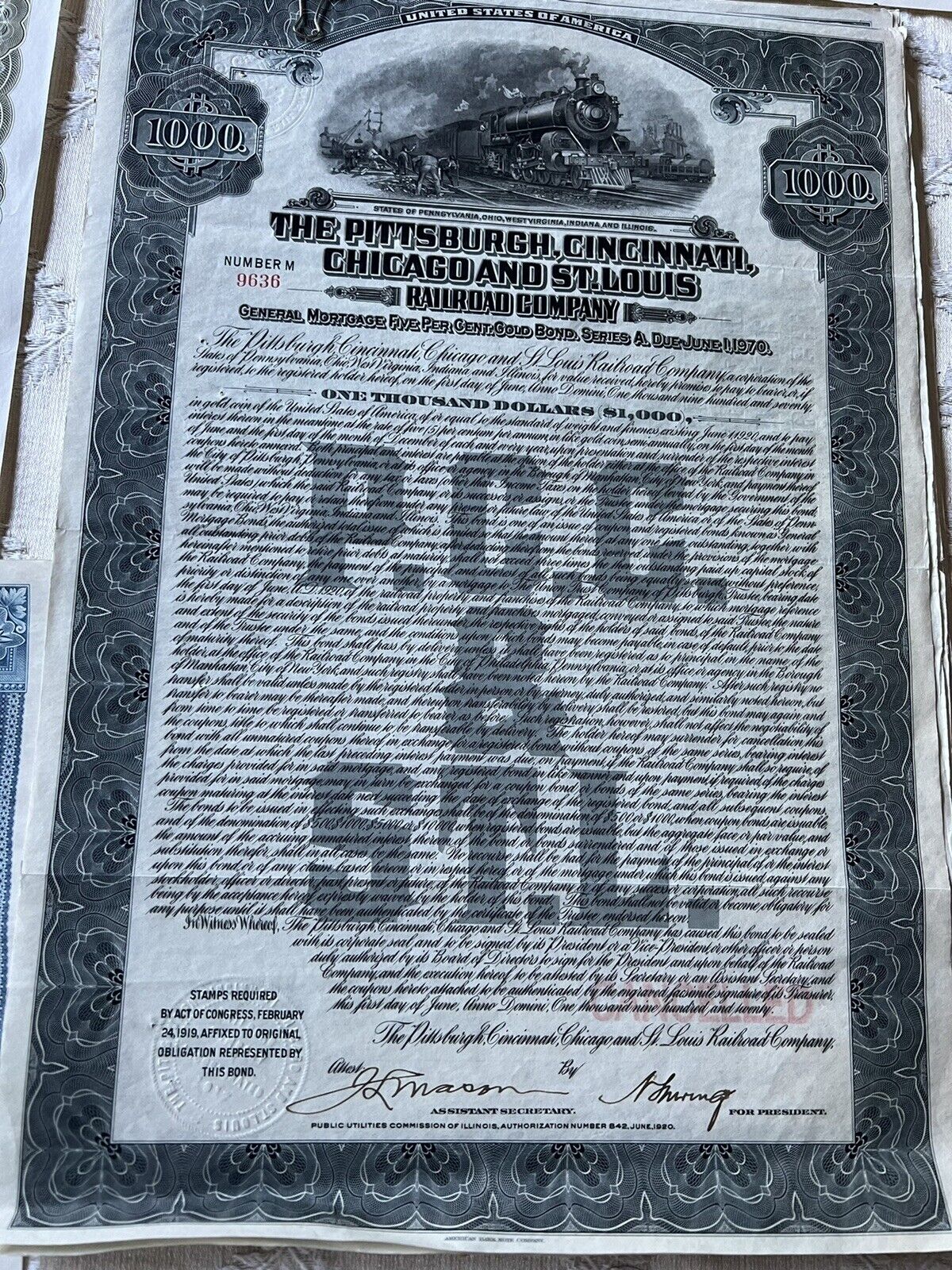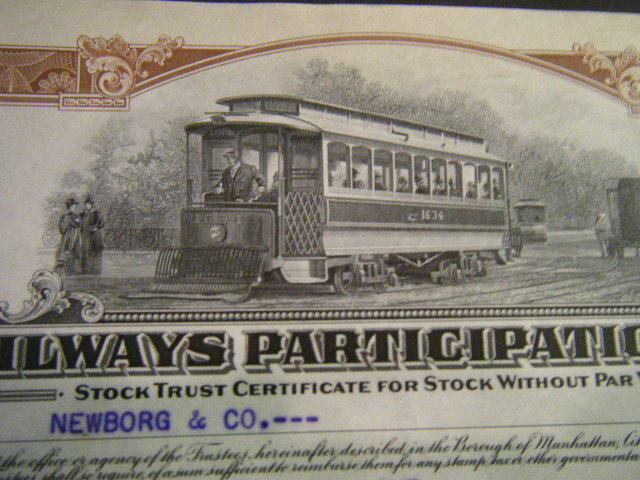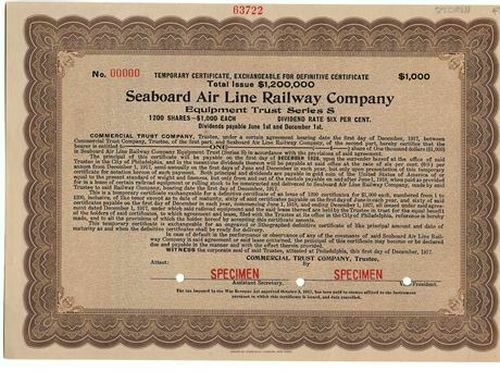-40%
Norfolk and Western Railway Company Stock Certificate
$ 6.33
- Description
- Size Guide
Description
Product DetailsBeautifully engraved antique stock certificate from the Norfolk and Western Railway Company dating back to the 1960's and 1970's. This document, which has the printed signatures of the company President and Secretary, was printed by the Security-Columbian Bank Note Company, and measures approximately 12" (w) by 8" (h).
This certificate's intricate vignette features a N&W train in front of a female figure with a globe and a pair of industrial scenes.
Images
The images presented are representative of the piece(s) you will receive. When representative images are presented for one of our offerings, you will receive a certificate in similar condition as the one pictured; however dating, denomination, certificate number and issuance details may vary.
Historical Context
Incorporated in the mid 19th century as the Norfolk and Petersburg, the line connecting the two cities was completed in 1858. Part of the track crossing the “Dismal Swamp;” was laid on a mat of trees and logs. The and Petersburg consolidated with the Southside Railroad and the Virginia and Tennessee in 1867. The three roads merged completely in three years later to form the . In 1881, the AM&O was sold to Clark interests, who renamed it . In 1924, the bought an interest in this based carrier – whose main operation was to transport output from the areas of and .
Later, the company made a determined effort to improve its in an effort to make them compete with the new diesels. In its own design offices and own locomotive works at Roanoke, the line produced three new locomotives. The J class 4-8-4, first built in 1941, was designed to haul the prestige passenger services at 100mph or more, while the A class 2-6-6-4 and Y class 2-8-8-2 articulated types were used for freight work. The major benefit of these new engines was a streamlined maintenance regime between runs, which allowed inspection, refueling and lubrication to occur in less than hour. This drove down maintenance costs by an estimated 37%. Eventually though, the Norfolk & Western succumbed to the benefits of the diesel, placing orders for 75 units in 1957. Later, there was a sustained push for the consolidation of numerous lines. In the fall of 1959, the Norfolk and Western, and the merged. It was during this time, that nation saw a marked decline in total track mileage. At its peak the line operated some 8,000 miles of track, 1,300 locomotives and 86,000 freight cars.
